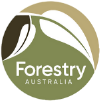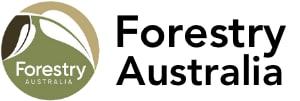
OPINION PIECE: If a tree falls in The Wombat State forest…
This Opinion Piece was published in the Ballarat Courier.
We may wonder if a tree falls in a forest with no one around whether anyone will hear it, but if a forest is flattened in a windstorm – will it increase fire risk?
That’s the burning question surrounding the Wombat State Forest, which was hit by the storms of June 2021 that came with a severity that has rarely been seen before, leaving widespread damage and vast areas of fallen trees on the ground. The sheer scale of trees fallen in last year’s storms means that there is a unique forest fire and community risk of both large amounts of fine fuels and 200–400 tonnes per hectare of coarse woody debris.
It is normal for tree fall to occur in the forest, in fact, this is an important process contributing to coarse woody debris and critical species habitat on the forest floor. But the scale and extent of damage brought about by the 2021 storms is beyond ecologically normal levels and beyond what is required species habitat. In this case, the fallen trees represent a real danger, not only to adjacent human communities, but to wildlife, due to the extreme fuel loads.
But there is a broader point here, and that relates to how we steward forests through major disturbances which radically disrupt their structure. With climate change elevating the risk and impact of severe climatic events like storm and fire, it has never been more important to ensure that we manage our forests to be their most resilient. When informed by scientific best-practice and Indigenous knowledge, and performed by trained experts, we can do this – and yes, sometimes it involves chainsaws and bulldozers.
Timber recovery operations – or the act of removing timber debris from areas affected by storms, fire or flood in forests – are the necessary, and the only practical, measure to ensure these areas of highest fire risk are effectively managed ahead of the bushfire season.
In managing that risk, it is critically important that timber recovery operations are conducted with detailed planning, scientific expertise and with involvement and consent of the Traditional Owners Indigenous community. Operations must respect the wide range of environmental, social and cultural values held in our forests.
There are a range of benefits of timber recovery after severe weather damage.
Firstly, it reduces fire risk.
After a severe weather event, windblown trees that are not removed become part of the fuel load as they dry out over the next few years, adding to the convective component of fires. If left alone in high volumes, they increase the likelihood of firestorms. Additionally, high volumes of large logs could smoulder after any future fire, which negatively impact any surviving trees or soil biota.
If not removed, high loads of heavy debris also create a barrier to fire fighter access and inhibit the establishment of control lines in the event of a fire. Timber recovery makes it easier for fire crews to access the forest for fire prevention or suppression activity, and to control fires when they do occur.
Secondly, in removing the trees, it makes sense to make use of this valuable natural resource before it degrades. In the case of the Wombat Forest, the recovery of this timber will provide financial benefit the Dja Dja Wurrung and timber and firewood to the community, which is currently in short supply.
Such timber recovery ultimately takes pressure off other forests designated for production, helps to reduce reliance on imports, and ensures timber, one of our most precious and versatile natural resources, does not go to waste.
Finally, timber recovery makes sure that forests are safer places for people to access for work, travel and recreation.
To ensure the best possible outcomes, timber recovery planners and managers must ensure detailed consideration is given to minimising further unnecessary disturbance. This includes supporting structural diversity across the forests, through retaining hollow-bearing (habitat) trees where they are still standing, and an ecological level of coarse woody debris on the ground to support populations of arboreal and ground-dwelling animals, forest birds and other flora and fauna.
As a final point, it’s worth remembering the history of the Wombat Forest – it has endured through a difficult history of exploitation from mining, before being regulated by the pioneering forester John La Gerche. It is a forest that has required stewardship so its values are protected – and after the windstorms of 2021, targeted and well-regulated timber recovery are but another chapter in that stewardship.
Dr Michelle Freeman, Vice President Forestry Australia

